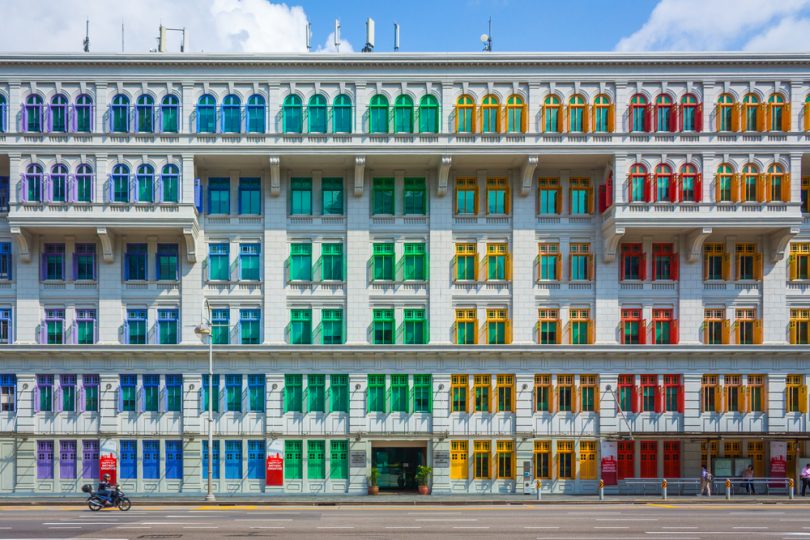By Anisa Pinatih
Conservation does not merely revolve around museums and art galleries but is more about preserving the sense of character, identity and history of communities. To do so, the works often involve understanding the front façades; the doors, windows and vents; the mechanical and electrical services; the ornamental plasterworks; the roofs, timber floors and staircases, and so on.
FIVE KEY PRINCIPLES
To ensure functionality, on the other hand, the works often involve interventions to the structural systems. It is commonly believed that such interventions will threaten the original heritage character, so the Urban Redevelopment Authority (URA) has provided a technical handbook specifically to guide this, summarised as follows:
- Conserved as found: Each intervention must respect the original character and deteriorated structures should be repaired rather than replaced.
- Minimum intervention: The removal or alteration of any historic material of distinctive architectural features should be avoided whenever possible.
- Like-for-like repairs: The characteristics of materials used in conservation repairs should fully match and be compatible with existing historic materials.
- Reversibility: Any measures should allow for future works to revert back to the original; or at least measures should not limit future interventions.
- Sympathetic repairs: The chosen techniques should be the least invasive and most compatible. Monitoring during and after the interventions should be carried out to ascertain the results.
Before any intervention, an assessment of historic structures is mandatory, which often requires an interdisciplinary approach involving the skills and expertise of structural engineers, architects, conservation specialists, material scientists, geologists and structural testing specialists. Should intervention be unavoidable, any works must be done carefully in order to preserve the original features.
GUIDE FOR INTERVENTION
- Load path and material compatibility
Load paths should not be altered in any way that causes undesired stress concentration. Material must be compatible in terms of strength, modulus, dimensional stability and vapour permeability as the original.
- Impact on the heritage character
Care should be taken to ensure that original characters are not damaged or adversely affected by the works. If it is unavoidable, detailed documentation should be done in due diligence to allow such features to be restored or reinstated.
- Structural restoration and repair
Repair of degraded building material is achieved through restoring the geometry of structural elements; but when the loss of a section is not significant, protective measures of the existing materials will be sufficient.
- Structural strengthening and addition
In the case of structural damage such as from ground settlement or increased loading from a change of building use, it may be necessary to introduce new structural elements to partially or entirely bear the required new load.
- Foundation strengthening
Upgrading of foundations can be carried out by underpinning with micropyles or through improvement of the soil but these types of measures should be extended to the entire building to avoid differential deformation of the building.
- Protection, temporary support and monitoring
Damage could be caused by settlement and vibrations resulting from underpinning works or any accidental impacts. An adequate protection, temporary support and instrument monitoring system should be catered for and put in place to ensure the building’s structural stability and prevent damage to the heritage elements.
- Heritage Presentation
In the adaptive reuse and fitting out of a historic building, box-ups, false ceilings and partitions are often used to conceal new services, covering up originally exposed structures such as walls, columns, trusses, ceiling beams and joists. These new elements should be carefully planned such that the historic features are not obstructed.
In any case, professional consultations are required for the technical investigations and works, but basic understanding about a good conservation regime as outlined above would result in better management and works planning of a historic property.
If done properly, heritage conservation and urban revitalisation can boost economic growth, particularly in the hospitality and creative industries. Implementing good practices’ guidelines such as the one published by URA is not only necessary but also ensures profitability.– Anisa Pinatih, Construction+ Online
Source: Conservation Technical Handbook: A Guide for Best Practices Volume 4 |Structure
Disclaimer: Construction+ makes reasonable efforts to present accurate and reliable information on this website, but the information is not intended to provide specific advice about individual legal, business, or other matters, and it is not a substitute for readers’ independent research and evaluation of any issue. If specific legal or other expert advice is required or desired, the services of an appropriate, competent professional should be sought. Construction+ makes no representations of any kind and disclaims all expressed, implied, statutory or other warranties of any kind, including, without limitation, any warranties of accuracy and timeliness of the measures and regulations; and the completeness of the projects mentioned in the articles. All measures, regulations and projects are accurate as of the date of publication; for further information, please refer to the sources cited.
Hyperlinks are not endorsements: Construction+ is in the business of promoting the interests of its readers as a whole and does not promote or endorse references to specific products, services or third-party content providers; nor are such links or references any indication that Construction+ has received specific authorisation to provide these links or references. Rather, the links on this website to other sites are provided solely to acknowledge them as content sources and as a convenient resource to readers of Construction+.

 Malaysia
Malaysia Hong Kong
Hong Kong Indonesia
Indonesia Tiếng Việt
Tiếng Việt ประเทศไทย
ประเทศไทย










